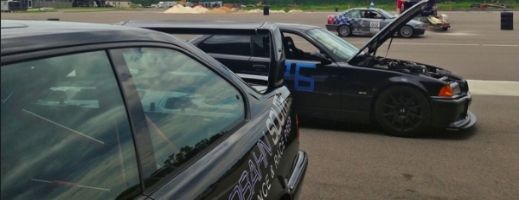A little-known powertrain engineer cements Nissan's reputation for superb engines
Richard Truett
Automotive News
May 19, 2008 - 12:01 am ET
In 1990, Yoshiyuki Kimura landed a plum assignment.
Nissan named him chief engineer, at age 49, for the original VQ series of V-6 engines.
Today, 7 million engines later, the lightweight, free-revving powerplant is the company's award-winning workhorse. It cemented Nissan's reputation for top-notch engineering, particularly for engines.
The VQ engine was not Nissan's first V-6. Before the VQ there was the VG, a V-6 that had a cast-iron block and aluminum heads, one overhead cam per head and two valves per cylinder. It was reliable but not technically advanced.
Nissan also had established a great reputation for building smooth-running inline-sixes. The much-praised 1970 240Z was powered by an inline-six.
Some factions inside Nissan wanted to keep building the inline-six, Kimura recalled, speaking through an interpreter.
“The inline-six had persistent popularity internally and externally,” Kimura said. “The transverse integration into a front-wheel-drive car was thought to be difficult.” So, Kimura said, Nissan built a high-tech V-6 to win over consumers who were fans of the inline engine.
At first, the assignment was stressful because he worked two jobs. Kimura also was in charge of the engineering of engine blocks, cylinder heads and other components for several other Nissan engines.
“I was quite surprised when I was nominated because I was a bit worried whether I could hold two posts,” Kimura said. “But this concurrent work lasted only one year: 1990.”
On the other hand, Kimura realized he would be creating the engine architecture for Nissan's future.
The VQ featured an aluminum block, a double-overhead cam and 24 valves. Over the years, certain versions have been fitted with turbochargers, direct fuel injection, variable valve timing and other innovations.
Kimura said Nissan started clean with the VQ and did not borrow ideas from competitors' engines. It debuted in 1994.
“At the last stage of development, we investigated Toyota's 1MZ and also Ford's Duratec V-6. However, during the design of the VQ, we did not have any consciousness of other competitors' engines.”
Today, Kimura is retired but works a few days a week in Nissan's engine museum in Yokohama, Japan. Looking back, Kimura says he would do nothing differently.
“I don't think there was any better way we could have done this.”








 Reply With Quote
Reply With Quote


 ..;Hyabusa;fuka h8ta
..;Hyabusa;fuka h8ta

